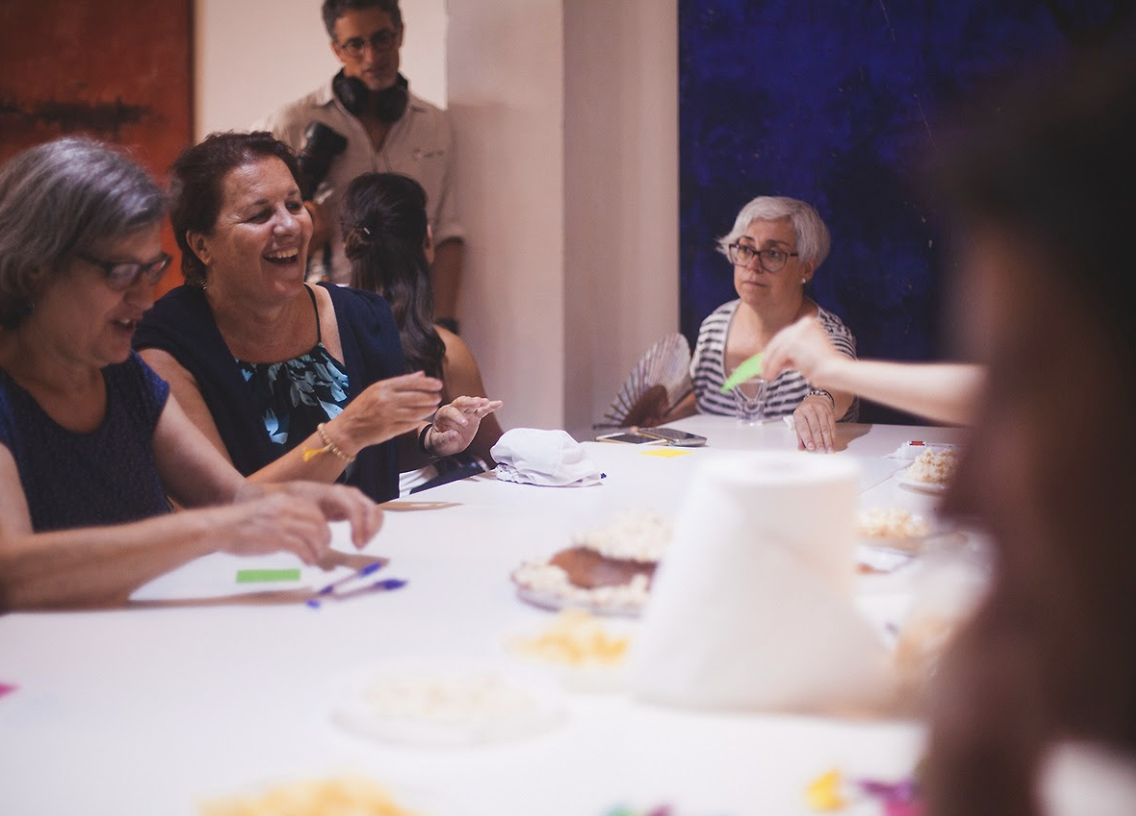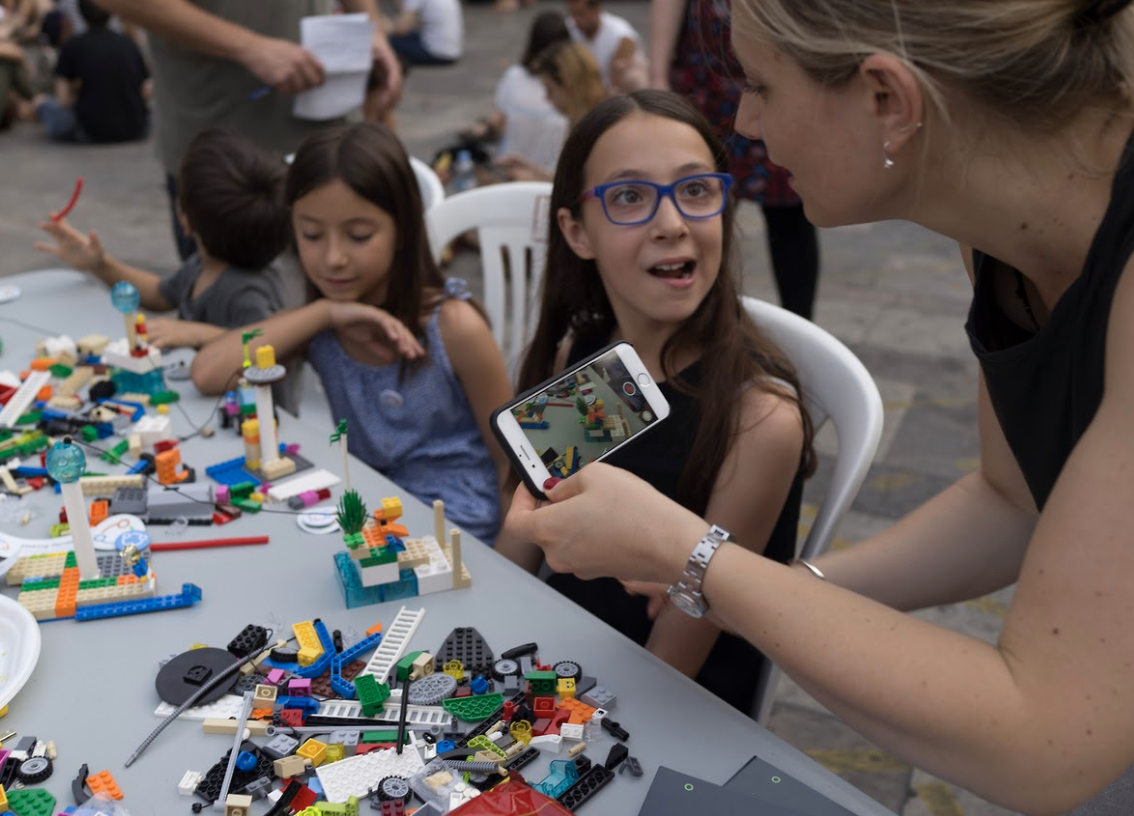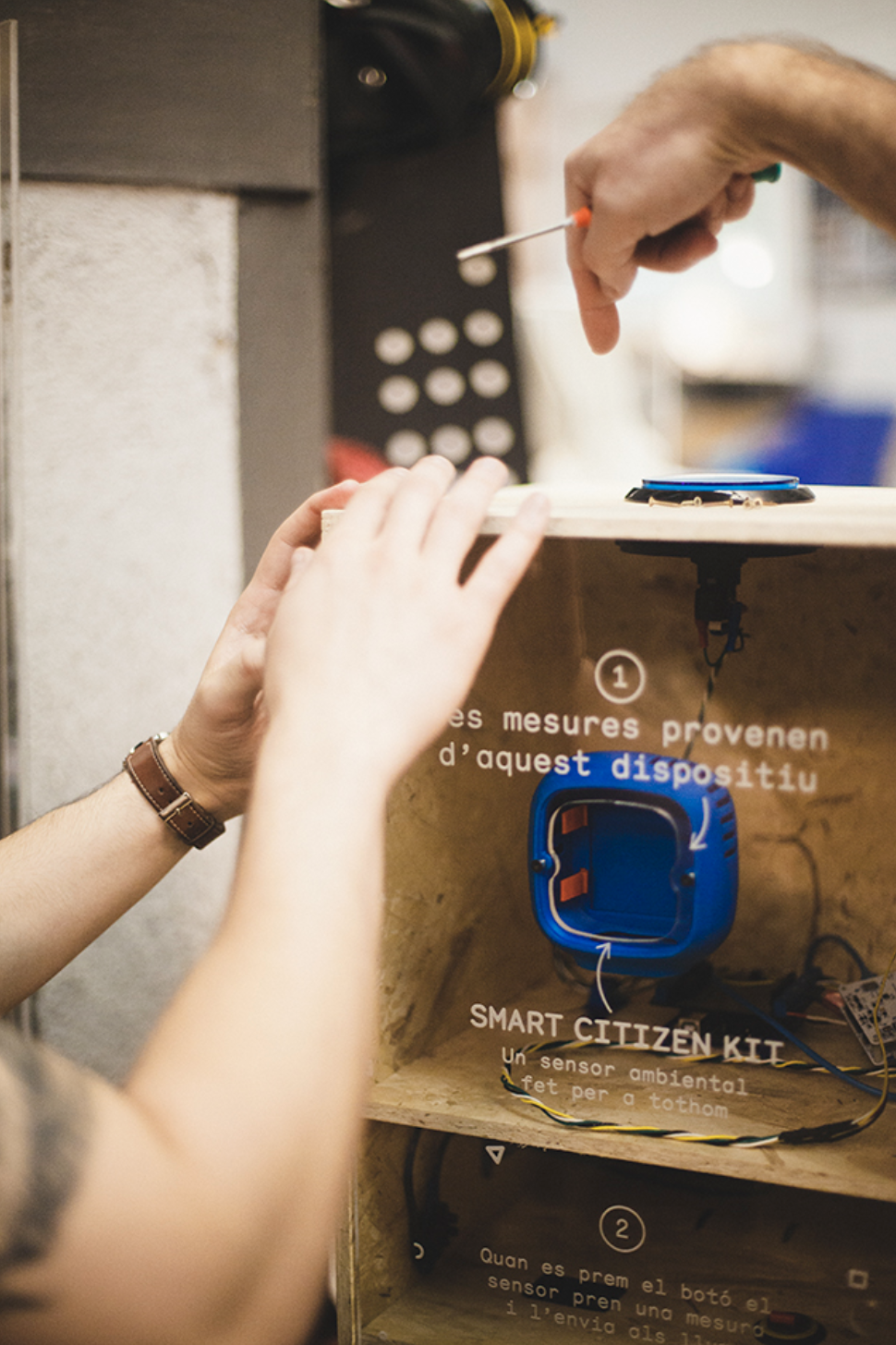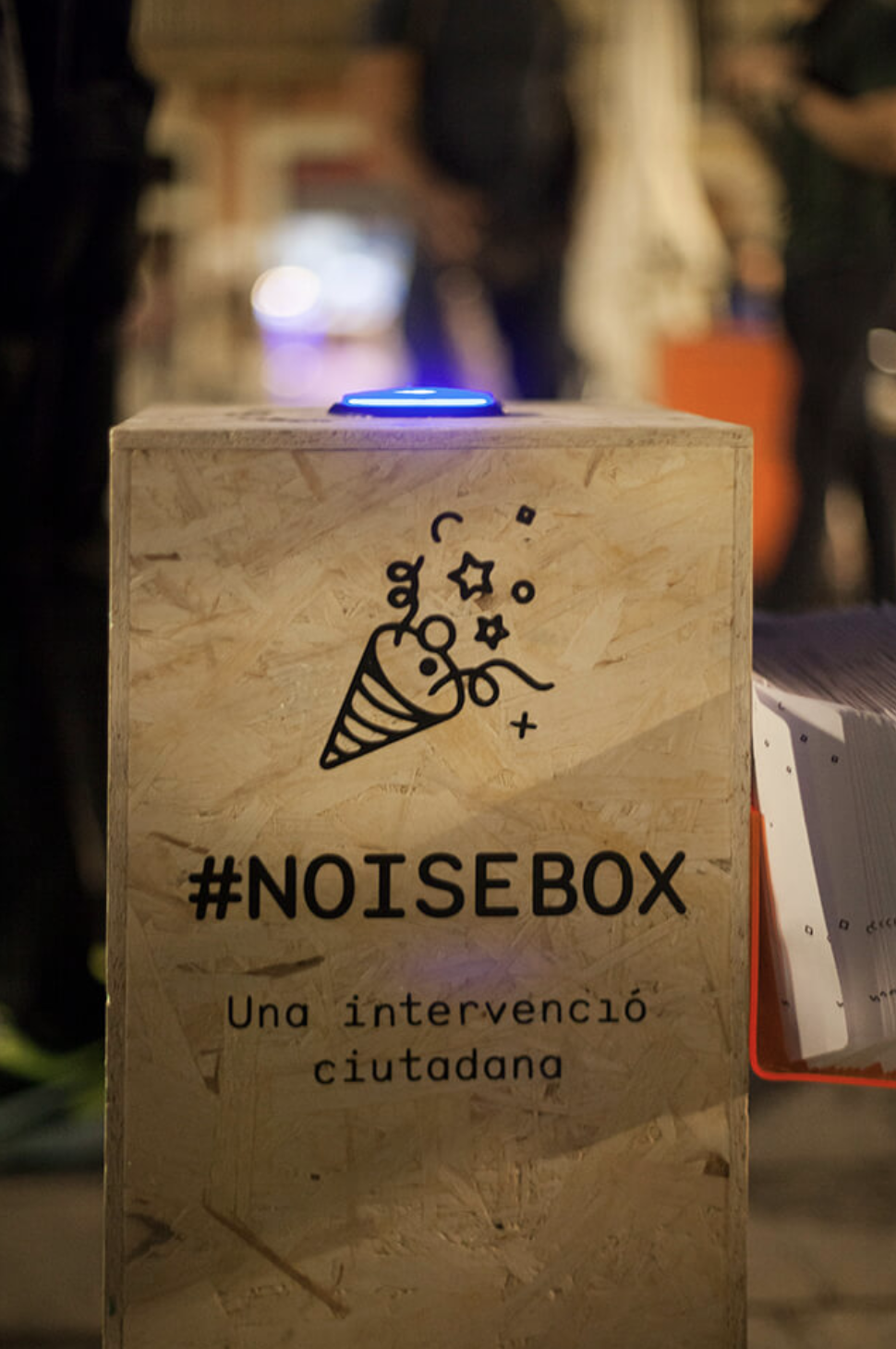The Bristol Approach for Citizen Engagement in the Energy Market – an interview
By Sebastian Klemm from Proofing Future
“To design the Citizen Engagement framework and guidelines we carried out interviews with each pilot and conducted workshops with training materials to prepare each pilot to undertake engagement with a foundation in engagement practices. The workshops covered equity, diversity and inclusion, these are key to developing technology that is useful for everyone, not a select few,” says Lorraine Hudson as we speak with her, Anna Higueras and Lucia Errandonea about their transformative and collaborative project TwinERGY.
The TwinERGY project embraces synergies, ideas and work of communities – including Bristol City Council & the University of Bristol – and from around Europe. Get to know the whole consortium team.
Lorraine Hudson is Director of Bristol Living Lab at Knowle West Media Centre (KWMC). She manages the development of social innovation projects with a focus on diversity and inclusion of citizens, collaborating with a wide range of external stakeholders including academia, business, the public and voluntary sectors. She has over 20 years’ experience of working in the environmental, digital technology and education sectors, with a particular focus on working with citizens on the co-creation of sustainable cities and communities. She has also worked in academia, local government, consultancy and industry. In TwinERGY Lorraine has been coordinating KWMC’s role in the project which is focused on the citizen engagement approach, empowering citizens around data, capturing and sharing citizen learning and supporting engagement in the Bristol pilot.
Anna Higueras is a content creator and project management specialist in the sectors of social innovation, digital culture, science, art and technology at the Barcelona based strategy & research agency Ideas for Change. She graduated in Chemical Engineering as well as Business Administration in the Music Industry. Anna previously worked as an energy efficiency project consultant and was part of the Sónar+D team, leading projects related to technology and entertainment. She participated in the digital social transformation of the city of Barcelona, working for the Office of Technology and Digital Innovation of the Barcelona City Council. In TwinERGY Anna is coordinating the creation of content and social media strategy of the project.
Lucia Errandonea is a Civic Engagement Consultant and Project Manager at Ideas for Change. She is a political scientist specialised in participatory design and management of city and community projects. She has experience working in participatory urban planning to develop and coordinate infrastructure for social inclusion projects in vulnerable communities at the Buenos Aires City Government (Argentina). In TwinERGY Lucia is part of the engagement strategy coaching team.
CITIZEN ENGAGEMENT FRAMEWORK APPLICATION
“In our previous interview, Dr. Athanasios Chassiakos says in regard of the TwinERGY project: “Citizen participation and community co-ownership schemes play an increasingly societal role by fostering citizens’ participation in energy matters and raising acceptance of renewable energy. They can bring tremendous benefits for citizens and communities by placing them closer to the energy transition and fulfilling Europe’s decarbonisation goals.” Your organisations Knowle West Media Center and Ideas for Change have led the co-design of an ad-hoc “Citizen Engagement Framework” to ensure that consumers are placed at the center of the innovation process. How exactly do you apply the Citizen Engagement Framework in the TwinERGY project and in the actual context of the pilot cities like Bristol?”
Lorraine Hudson: You can take a look at our Deliverable 2.1 in the TwinERGY project, the report Best practice guidelines for engaging citizens in the pilots and metrics for diversity and inclusion, written by Knowle West Media Centre (KWMC) and Ideas for Change (IFC).
These guidelines have been co-created in collaboration with partners from the four pilots in the TwinERGY project – Germany, Greece, Italy and the UK.
The report ‘Best practice guidelines for engaging citizens in the pilots and metrics for diversity and inclusion’ is for pilots to refer to during the duration of the project; to check their methods, to act as guidance and as a benchmark for participatory engagement, to provide tools for the pilots to utilise in designing and carrying out engagement activities in their local communities and to aid pilots in the process of iteration, testing and dynamically adjusting methods to meet the needs of their citizens.
To design the Citizen Engagement framework we carried out interviews with each pilot and conducted workshops with training materials to prepare each pilot to undertake engagement with a foundation in engagement practices. The workshops covered equity, diversity and inclusion, these are key to developing technology that is useful for everyone, not a select few.
“Taking into account that the energy sector is changing rapidly and the efficiencies being developed have cost implications as well as the potential to reduce the impact of climate change, involving as broad a segment of the population in TwinERGY research may ensure that demand response models will be more robust than if only tested on a homogenous group”.
In December 2021 we held a data workshop with the Bristol pilot participants and it was clear that by being guided by the TwinERGY guidelines on community engagement and diversity and inclusion had resulted us successfully recruiting a diverse range of participants to this pilot.
In the Bristol pilot of TwinERGY, we have an objective of involving participants who are typically underrepresented in innovative energy projects. The pilot seeks to involve people who experience fuel poverty and those most impacted by oppressive systems based on disability, classism, racism, gender bias and ableism – and as a result of this are often underrepresented in energy research.
“The Bristol pilot participants range in ages from young families through to older people. 11 of the 12 homes are in disadvantaged areas of Bristol, 9 in the 10% most deprived neighbourhoods in England and 2 in the top 20% most deprived – as defined by the England Indices of Multiple Deprivation. These are areas that face income deprivation, fuel poverty, child poverty, greater health deprivation and disability. We also have participants from Black, Asian and minority ethnic communities involved”.
Anna Higueras: We do have some principles from were the citizen engagement strategy unfolds, that were agreed in the co-creation phase with the rest of the consortium. Let us share some of the keywords that can better explain that:
Collaboration: While many R&D projects focus on working with ‘early adopters’, in TwinERGY we aim to involve ordinary people and address their concerns in relation to their everyday energy management.
Multiple voices: Everyone’s interests and expectations should be represented at any stage of the project – in particular those who are currently most excluded. TwinERGY specifically addresses inclusion and diversity because involvement in technology projects can help to tackle structural inequalities that exist in the industry and society as a whole.
Power: Traditional methods of citizen engagement often reproduce positions of power putting experts and academics in leading positions. Challenging traditional hierarchies by changing the tone to design a more egalitarian space is at the heart of the project.
Experimental and Collective: TwinERGY commits to an experimental ethos to collective learning and doing – meaning that everyone’s an ‘expert’ in their own way.
Lucia Errandonea: We had created an adapted version of the Bristol approach that builds on the guiding principles of Twinergy, and sheds and expands the design and deployment of the strategy to include elements specific to an energy-related project focused on Demand Response. The result of this work was the Twinergy engagement framework with 5 iterative steps:
Identification of the communities.
Co-Design Technologies and Incentives for participating in the project.
Deploy Technologies at people’s home and develop new skills within the communities.
Measure Changes with a co-assessment approach.
Reflect on Outcomes to improve engagement and delivery.
KWMC and Ideas for Change have worked with pilot leaders, through interviews and workshops, to understand their previous experience with engagement methods and gather knowledge about local contexts, citizens and communities who will be engaged.
The Citizen Engagement Framework includes a set of innovative tools to guide pilot leaders in planning their interventions. These tools are the EDI matrix, the persona cards, scenario cards and a pilot timeline.
The EDI Matrix that aims to foster reflection in the recruitment process ensuring that everyone has equal opportunities to participate.
The Persona Cards that prompt an in-depth reflection about participants background, motivations and skills.
The Scenario Cards to imagine possible situations that could be experienced during the pilot program.
A Pilot Timeline that provides an overview of key activities to be conducted over the course of the pilot and supports planning in advance.
BRISTOL APPROACH BEST PRACTICES
“With the Citizen Engagement Framework in TwinERGY you draw upon “The Bristol Approach” that both your organisations Knowle West Media Centre & Ideas for Change have co-evolved. Can you elaborate on the particularities of The Bristol Approach and describe its effectiveness based on other project implementations?”
Lorraine Hudson: To co-create the Citizen Engagement Framework in TwinERGY, KWMC and IFC introduced and adapted The Bristol Approach, which is a participatory design methodology that is people and issue led.
The Bristol Approach is a six-step framework which provides a set of tools and a way of working that helps different groups to tackle the pressing issues in their community and create a greater understanding of the topic.
“The Bristol Approach provides opportunities for those least often heard to share their knowledge and wisdom and it has people and their everyday experiences and knowledge at its heart.”
This approach was originally developed by KWMC in collaboration with Mara Balestrini (at the time: Ideas for Change Research Director and Partner) and Bristol City Council, and it was called ‘The Bristol Approach to Citizen Sensing’ (Balestrini, M., Rogers, Y., Hassan, C., Creus, J., King, M. and Marshall, P. (2017). A City in Common: A Framework to Orchestrate Large-scale Citizen Engagement around Urban Issues. In Proceedings of the 2017 CHI Conference on Human Factors in Computing Systems (CHI ’17). Association for Computing Machinery, New York, NY, USA, 2282–2294.)
In the Bristol pilot of TwinERGY, we have an objective of involving participants who are typically underrepresented in innovative energy projects. The pilot seeks to involve people who experience fuel poverty and those most impacted by oppressive systems based on disability, classism, racism, gender bias and ableism – and as a result of this are often under-represented in energy research.
The starting point for The Bristol Approach is the belief that citizens should have a leading role in imaging, designing and building their future. Working with citizens is critical for a successful TwinERGY project and will lead to citizens that are further empowered and can potentially act as a driver for a more democratic energy market.
The approach has since been adapted for use in variety of other projects including other Horizon 2020 projects such as REPLICATE and ParCos:
REPLICATE – a project that explores how technology in our streets and homes could benefit our communities.
ParCos (Participatory Communication of Science) – a collaborative research project exploring how we communicate and understand science stories.
Lucia Errandonea: On the part of Ideas for Change we have implemented The Bristol Approach in further research projects in which communities played a key role, with successful results:
In the CitieS-Health project for instance, we applied the first pillars of The Bristol Approach – the identification of affected communities with a no-one left behind approach – we conducted a study to gather information about air pollution in Barcelona through strawberry plants that act as biosensors. Citizens put their plants on their balconies and, after a few months of exposure, they sent some leaves to a dedicated lab for a further analysis of pollutants. Moreover, we promoted co-design dynamics with citizens in CitieS-Health. Participants decided the research question after analysing their concerns through hands-on workshops and surveys.
In the Making Sense project communities participated in a collaborative analysis of the results about noise data through citizen sensors.
ENGAGEMENT STRATEGIES
“You recently conducted a workshop within which the energy projects TwinERGY, iFlex and Sender – working each under the European BRIDGE initiative – shared in on each their cocreation & citizen engagement strategies for energy projects. What are your key take aways from this exchange?”
Lorraine Hudson: It was very interesting to share experiences with the two projects which are very similar to TwinERGY but implementing pilots in different countries.
The Sender project had built in a co-creation period, prior to the pilots starting where they did a lot of work around understanding the needs of both the participants (citizens) involved in pilots and the partners capabilities.
“They had some interesting insights which were similar to our experiences. Particularly around the importance of understanding participant’s motivations to get involved in the pilots and the need to build trust through the engagement processes.”
Anna Higueras: What I found particularly interesting was the fact that the Sender project – an EU-funded initiative to develop energy service application to foster proactive Demand-Response programmes – has started with a strong research and co-creation phase to better understand who are their consumers and their particular situations. Once that is clear, they have developed an innovative segmentation framework, and targeted communication campaigns addressing their needs and requests. That is, for example, helping local communities in Finland, Austria and Spain to further understand energy culture complexities, and get empowered by applying targeted tips on how to control energy consumption. That sounds like a really inclusive, close, effective strategy, specifically tailored at end-users and consumers.
POTENTIAL OF ENERGY COMMUNITIES
“Since the end of summer 2021, energy prices have been rising in the European Union. While energy costs are rising for everyone, the financial cuts are not hitting rich and poor households equally. How can your Citizen Engagement Framework and the solutions tested in TwinERGY help make the energy transition more equitable and enable citizens to become less dependent on the potential double energy crises of both price as well as security of supply?”
Lorraine Hudson: TwinERGY is supporting participants to trial a demand management system which aims to increase their knowledge of the energy system and support them to play an active role in the generation and management of the energy use in their homes, helping them to developed new skills and understanding. This provides the potential for them to manage their energy more efficiently, especially relevant in a time of rapidly rising energy costs and significant concerns over security of supply which is causing a lot of stress for many people.
The Bristol pilot involves 12 homes working in collaboration with Bristol City Council, University of Bristol and KWMC. Most of these homes already had solar panels. They then have a home battery installed along with smart plugs and other energy management applications as part of the TwinERGY pilot.
”The homes are in areas of the city which face disadvantages and we have sought to engage a diverse range of participants for the purpose of working towards energy solutions which are more equitable.”
A large proportion are social housing and many are on pre-payment meters where they pay for their energy up-front using a smart card, key or token. This means they already pay a higher price for their energy and consequently face a greater challenge in terms of rising prices.
The Citizen Engagement Framework helps to bring citizens together with others partners in TwinERGY, including companies, research, local municipalities. It supports them to better understand how the technology works enabling them to explore their own energy use and take more control over the management of it using the innovative technologies. This means, it has the potential to empower people to make better use of the energy generated by the solar panels on their homes, so that they become less reliant on electricity from the grid – especially at peak times when it is more expensive – which could reduce their costs.
We are currently in the technology install phase and will shortly be interviewing the participants about their motivations for joining the project and their learning so far. But given the significant world challenges, that have resulted in record energy prices and an energy crisis, this is likely to be a huge concern for them.
“We also know from a data workshop we held in December that reducing their household environmental impact is a vital concern for the Bristol pilot participants.”
Lucia Errandonea: We strongly believe that by understanding the energy market and developing new skills, communities can gain more knowledge and change the way they produce and consume energy.
Anna Higueras: From our perspective, there is a lot of power in deepening consumers’ knowledge of the energy system and directly testing how real the opportunity is to participate in the electricity market, to adapt and to learn – using the technology and tools of the digital twin – and with the support of the relevant pilot teams.
“Recently, the electricity consumption of some of the households in the Bristol pilot have been made available. They show that for quite a few days these households have been almost independent from the grid, with a very small amount of electricity imported for consumption. In a context of high prices and long term guaranty of supply not 100% ensured, this is a direct learning to take away.”
IMPORTANCE OF THE PUBLIC SECTOR
“Moving from public companies entrusted with the supply of electricity in many EU countries, to the experience of neoliberal deregulation principles for ownership disaggregation through the EU’s “Internal Market in Electricity Directive 96/92/EC” in 1996 – aimed to “achieving a competitive market in electricity” – on to the similar directive 98/30/EC in 1998 – aimed at privatising the gas sector and “achieving a competitive market in natural gas – we could possibly come back to the conclusion that municipalities and public services are crucial to put people and our planet over profits. In the area of water, for example, 235 cities worldwide in the last 15 years have brought water services back under public control in frustration at rising prices and declining service delivery. What relevance do the municipalities have in the TwinERGY pilot projects as accelerators and incubators of innovative alternatives for resilient energy provisioning? What ways to unwind or circumvent the liberal legal deregulation for energy may the TwinERGY project point out along its pilots?”
Anna Higueras: As mentioned before, in a context of dramatic energy price rises and deep supply crises, the results of the TwinERGY pilots in various locations throughout Europe, each with their own regulations and deregulations, can bring light to the system.
“All experiments that provide data and evidence on the positive functioning of technological and social solutions that advance towards ‘citizen energy sovereignty’, that are less dependent on large generation and transport infrastructures, more distributed, and more efficient, are a step forward towards the exit of the crisis.”
Let us not forget that energy is, by nature, always consumed in the place closest to its generation, and therefore, energy generation systems in domestic installations or communities (buildings, districts) are the most efficient form of energy consumption.
And let us not forget either that the citizen’s capacity to influence public policies and to move energy regularization towards more inclusive spaces, is greater the more demand spreads, the more progress is made towards being able to have a voice – and some KWs to export – in the electricity market.
PUBLIC INSTITUTIONS AS ACCELERATORS OF INNOVATION
“In regard of Web3 technologies – that TwinERGY leverages – Francesca Bria, former chief technology officer of Barcelona, in a recent article addresses public institutions as enabling forces that could help achieve the twin goals of decentralisation and cultural empowerment. In TwinERGY and beyond: Can you give project examples where with your organisations you have succeeded in working with public institutions as accelerators of innovation for decentralisation and cultural empowerment?”
Lorraine Hudson: In TwinERGY, KWMC is collaborating with Bristol City Council and the University of Bristol which are two institutions in Bristol alongside Ideas for Change and the other partner organisations across Europe.
KWMC are a non-profit organisation with over 25 years’ experience of working with communities to understand how digital technologies can be utilised to meet local needs and develop creative models for positive social change. We are an arts charity based in Knowle West in South Bristol, an area which faces multiple inequalities including low income, fuel poverty, premature mortality, food poverty, educational and digital inequalities.
KWMC runs Bristol Living Lab which is a community of citizens, artists, technologists, researchers, businesses and public sector organisations who come together to create and test new ideas, tools and technologies to address the challenges we face both locally and globally. Bristol Living Lab is not a single building but a series of connected activities dispersed across a range of environments, from innovation hubs and public spaces to homes and gardens – innovation happening everywhere, every day, for everyone. It is part of the European Network of Living Labs (ENoLL) and collaborate on many EU and UK funded research projects.
Bristol Living Lab not only explores the needs of specific people and places, it involves collaborating with communities and Living Labs across the UK and the world, sharing knowledge and resources for the common good. Bristol Living Lab is underpinned by the The Bristol Approach, a way of working developed by KWMC with Bristol City Council and Ideas for Change, that puts citizens and communities at the heart of an initiative to ensure that innovation has a positive social impact and meets local need.
More projects the KWMC team are working on include:
We Can Make – about community led housing
Maker City – supporting young people and emerging creatives
Eight – a young people’s led creative agency.
ParCos – an EU project where we are working with local families on citizen led participatory science communication at The Factory – our innovation space for making, digital manufacturing and product design in the heart of South Bristol.
These are community led innovation and cultural initiatives, where KWMC as a community organisation have developed and deliver these in collaboration with local people, but also collaborate with local and international public institutions on them, like local government, universities, government agencies, European Union.










